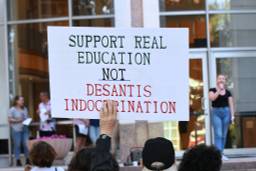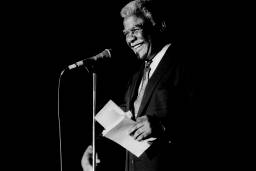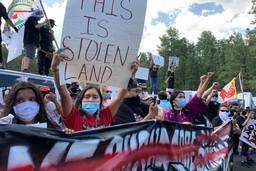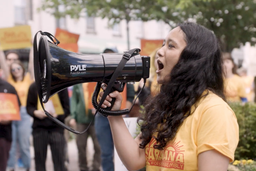Harold Washington’s Mayoral Victory Ushers in a New Era of Coalition Politics in Chicago
Following Washington’s 1983 election as the city’s first black mayor, In These Times writes that the historic victory “has created the potential for a new kind of politics in Chicago.”
In These Times Editors
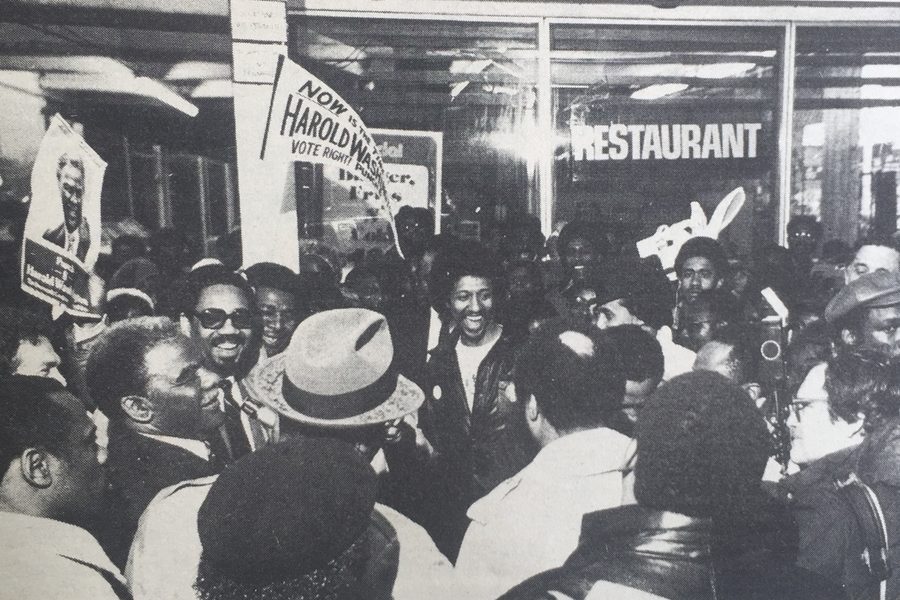
On April 12, 1983, Harold Washington was elected to become the first black mayor of Chicago, led into office by a multiracial coalition and a wave of left political organizing. In These Times covered the race closely, and in the publication’s first editorial following Washington’s win, declared that the victory proved that “the left, including its socialist wing, can now begin to enter the mainstream of American life along with blacks.”
CHICAGO — “We were slow to move from the protest movement into politics,” Harold Washington said just after he won the Chicago Democratic mayoral primary in February. “We were lulled to sleep thinking that passing a few laws was enough. But we’ve got to be involved in the mainstream political activity. That’s what’s happening here in Chicago,” he added. “And that’s the lesson that’s going out across the country.”
This “coming into political maturity” of minority groups that, as Washington says, once thought simple street protests were enough took a giant leap forward on April 12 when a sizable majority of Hispanic voters and enough left and liberal whites joined the overwhelming majority of blacks to give Chicago its first black mayor.
This was a victory for the left, both in the sense that the natural left constituencies — blacks, Hispanics and the labor movement — were its basis and in the sense that organizational support for Washington outside the black community came from left groups ranging from unions like AFSCME to the National Organization for Women to the Democratic Socialists of America. And it was a victory over racism in the most highly segregated of American cities, even though the election also demonstrated how deeply divided Chicago’s working people are by race.
The growing maturity of which Washington speaks was demonstrated in the high degree of organization in the black community — organization that brought close to 90 percent of the eligible voters in black wards to the polls, thereby continuing the reversal that began last November of the traditional pattern of low black turnouts. But it was also demonstrated in the aldermanic races, which indicated that this was not only an effort put a black man in office, but also an attempt to get a new kind of representation.
Machine incumbents were defeated in five black wards, as was a machine-backed candidate in one other ward where there was no incumbent running. (Machine candidates also lost in three predominantly white wards where Washington averaged 13 percent of the vote.) The defeat of these machine candidates was a result of the large turnout, which brought voters with more independent tendencies into the electorate and has created the potential for a new kind of politics in Chicago.
Shift to the left
We have frequently argued that the American people, unlike Europeans, do not usually vote in large numbers because they are normally presented with meaningless alternatives. On April 12, the alternatives were real and the turnout was of record proportions. It was heaviest among the blacks who understand what they have to gain, but it was also heavy among white ethnics, especially older ones, who mistakenly believed that they had a great deal to lose by the election of a black mayor. On election night Washington insisted that he would do everything within his power to assuage these fears, which were based on the false idea that Chicago’s blacks want more than their fair share of services and opportunities.
We believe that these fears will diminish as people see that having a black mayor will not destroy their neighborhoods, though just how far Washington can go in neutralizing his white opposition depends on how well he can deal with the city’s serious problems. It won’t be easy, but Washington’s strong commitment to the labor movement and to the interests of working people may enable him to erode racist fears and hostility toward him among working-class ethnics.
But the problems facing Chicago, like those facing all of the old industrial cities, are immense, and the resources available for solving these problems are inadequate and shrinking. In this context, any mayor —conservative, liberal or socialist — must help maintain or create a climate attractive to business. Washington has made it clear that he understands this and has indicated that he will attempt to do this by eliminating political corruption, increasing the efficiency of municipal workers and providing better educational opportunities, health care and public housing and transit — reforms that are in the interest of all community groups.
In running any city, the pressures to capitulate and subordinate other interests to those of the business community are great. And the temptation to settle for personal aggrandizement, of money and power, are ever-present. It is here that Washington’s base in the black community operates both to give him support in living up to his best instincts and to prevent him from abandoning his principles —or to destroy him if he does. For in cities with a black minority, black mayors are attractive to the business interests with which they share power only so long as they have the trust and strong support of their electoral bases.
The black community in every city is a natural left constituency. This is true not only for municipal politics, but also nationally. It explains why the only consistently left presence in the mainstream of American political life is the Congressional Black Caucus — of which Washington has been a member. Black Caucus members like Washington, John Conyers (D-Mich.) and George Crockett (D-Mich.) —all of whom have overwhelmingly black districts — can take left positions on any issue and can publicly identify with various left organizations and still count on getting upward of 90 percent of the vote every two years. Rep. Ronald Dellums (D-Calif.) is equally outspoken on the left, but because only some 35 percent of his constituents are black. That is why Dellums’ district is not “safe.” But, like Washington’s Chicago-wide constituency, Dellums base is a successful coalition on the left.
If Washington and other black leaders throughout the nation are correct in their belief that Chicago is pointing the way for a new black politics, then there is now also a possibility for a new left politics.
In other words, the left, including its socialist wing, can now begin to enter the mainstream of American life along with blacks. For while a fully mobilized black community can provide the solid core of victory, as it did in Chicago, in many places blacks can be successful only in coalition with Hispanics, labor and the left.
In short, in an as yet undetermined number of places, the possibility of a new kind of coalition politics has emerged — a politics based on black leadership of fully mobilized black communities.
Up from theory
In a sense, of course, this is not a new idea. The left — especially the socialist left —has long talked about coalitions of labor, blacks, women and others. But while such coalitions have frequently been assembled on paper, and occasionally around demonstrations and protests, they have rarely, if ever, been effective in electing our own people, either black or white, to office. And then, too, these past left coalitions have been based, at least in theory, on labor, with blacks and others acting as secondary allies. But the new reality is that the coalitions, if they come into being at all, will be based on mobilized black communities and, therefore, will most likely be led by blacks.
In Chicago, we have now seen that such a coalition can take office. What we don’t know is how much can be accomplished in the face of the truly formidable obstacles imposed by the current recession and the Reagan administration cutbacks. Prudently, Washington is promising no miracles. But he is promising, within the limitations imposed upon him by forces over which he has no control, to provide all groups in the community their fair share of the city’s resources. That promise alone, if carried out, would be a giant step forward.

I hope you found this article important. Before you leave, I want to ask you to consider supporting our work with a donation. In These Times needs readers like you to help sustain our mission. We don’t depend on—or want—corporate advertising or deep-pocketed billionaires to fund our journalism. We’re supported by you, the reader, so we can focus on covering the issues that matter most to the progressive movement without fear or compromise.
Our work isn’t hidden behind a paywall because of people like you who support our journalism. We want to keep it that way. If you value the work we do and the movements we cover, please consider donating to In These Times.

